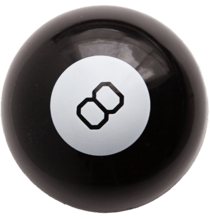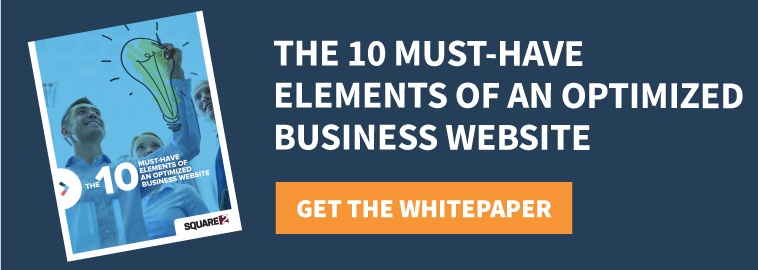
The Website Upgrades That Always Drive Leads, Rankings And New Sales
Every business has a website. Every website has a variety of different pages. To you, all the pages might seem similar, but websites should have very specific pages for very specific objectives.
How you manage, optimize and deploy those pages will impact how well your website converts visitors into leads and leads into new customers.
Recently, I was talking with the leadership team at a prospective client. One of their challenges is that prospects are skeptical about using their services despite many five-star reviews posted on their homepage.
It was obvious to us – their homepage was amateurish and lacked any indication this was a legitimate business.
Every single page on your website should have an action-oriented goal associated with it that you use to measure performance.
Let’s look at each type of page on a typical website and establish those goals, along with the upgrades that can improve these goals over time.
Your Homepage
This is the most important page on your website. It’s the page most visitors see first. It’s where they’ll start forming a perception about your company and where they decide what actions they should take. Should they hit the back button or stay long enough to look around?
The goal of your homepage is to get them to stay, click and want to explore the site a bit more. You want the homepage to tell your story and to show visitors you have educational information that they’ll find helpful in their search for information.
The one action you want visitors to take on your homepage – click! This means they look around for more than a few seconds. Here are a few tips on getting them to click.
Tell them a compelling and emotional story that aligns perfectly with the challenges they’re facing and supports why they might be on our website. Do this in 10 seconds or risk losing them to the back button.
Make sure they see themselves when they land on the homepage. They’re going to need to feel like they are in the right place, that you have solutions for them, that you do something no one else does and that you’ve already helped people just like them.
Your homepage is for people at all stages of the buyer journey, so it needs to have offers, links and additional information for everyone regardless of stage.
Consider some early buyer journey content on your homepage as a way to get your visitors engaged and some middle buyer journey content or pages for you to direct them to. Finally, offer late buyer journey options for people who want to talk to you now.
Chat is a great way to help those further along immediately and quickly connect with someone to get their questions answered.
PRO TIP: Put a video on your homepage. This is great for keeping visitors on the page longer, getting them to click on something engaging and helping tell your story when people don’t feel like reading.
Plus, the extra click, longer time on site and decreased bounce rate will help this important page rank higher on Google.
Your Products Or Services Pages
I consider these pages a bit more meat and potatoes, meaning people coming to these pages are checking boxes. Does this company do what I need them to do or what I think I need them to do?
With this intent in mind, make sure these pages are detailed enough to answer the question. Make sure these pages talk about what you do in specific terms. Try to keep the jargon to a minimum.
These are typically pages that might come up in a website search, so make sure these pages have the right keywords, phrases and questions for common search terms. The pages should have the right headers and sub-headers. Again, think SEO when it comes to products and services pages.
You still want to encourage a click or conversion on these pages, but the offers and links will be different than those on the homepage.
Since more middle buyer journey people are hitting these pages, consider more technical content here. Comparison guides, data sheets, checklists and other shorter but educational content directly related to the product or service page the visitor is on will improve conversions.
PRO TIP: You may be able to drive a sales lead on these types of pages if you leverage chat and customize it for the products or services related to the specific pages or the challenges associated with people looking for these specific products or services.
Chatbot: “I noticed you looking around our sales-ready website page. Did you know that most companies redo their website every 12 months? Are you considering a new website project? If you have any questions, I’d be happy to help.”
Your Content-Specific Landing Pages
We’ve been talking about homepages and website pages, but now we’re shifting gears and talking about specific pages that have highly specific goals.
Landing pages are different than website pages – so different that HubSpot actually has different categories for each.
They need a strong headline that is also optimized for search and your keywords. They need to quickly help visitors who land on the page feel safe and that they’re getting what they’re looking for.
They need to have social proof as it relates to the offer on the page. For example, logos of other companies you’ve worked with or testimonials from people who have converted on this page and found the information valuable. Video does a wonderful job here of helping people feel safe.
Finally, there’s a form on this page. That form needs to be efficient; in other words, don’t ask for 10 to 12 pieces of information. That will increase the friction and drive down the conversion rate. The less info you ask for, the higher your conversion rate.
For early buyer journey offers, just ask for an email address. For more middle buyer journey offers, you can ask for names, titles and company information. Finally, late buyer journey offers are where people might be willing to tell you more about them and their company, like sales volume, the number of employees or their most important issue or challenge.
If you’re not deploying forms based on the stage of the buyer journey, this could be one place where you can redeploy and improve conversion rates.
PRO TIP: Strip any navigation or social sharing from your landing pages. These are distractions and take away from your effort to drive a single action — the conversion. If someone wants to get back to your homepage or website, the logo is universally accepted as a link back home.
Your Thank-You Or Delivery Pages
After a conversion, you have an opportunity to serve up another type of page. These thank-you or delivery pages serve as a way to continue the conversion.
If someone downloads educational content, consider showing them similar content or blog articles that cover a similar topic. If you have a late buyer journey offer that aligns with a specific middle buyer journey offer, consider serving that up to people who converted on that middle buyer journey offer.
If they’re open to continuing the conversation, you’ve given them every chance. If they don’t convert, you can be sure they’re not ready to speak with anyone yet. From here, you can tailor your lead scoring and sales rep follow-up accordingly.
PRO TIP: The content you serve up should be very specific to the initial content requested. In a lot of cases, I like to offer related blog articles and a chance for them to subscribe to our blog. This works because now I get to share information with blog subscribers three or four times a week and I get to keep exposing prospects to our high-value content.
Your About Us Or Company Page
People love talking about themselves, and websites are no different. But you have to put this content in context for your visitors. If your entire website is all about you and you never address your prospects, it’s like meeting someone at a cocktail party and they only talk about themselves – this is an immediate turnoff.
Don’t be that person.
Make sure your about us or company page is about how you help other people and why you’re passionate about your mission. Share your vision with your visitors, but make sure it’s wrapped around what’s in it for them.
Why would someone care about these pages? The answer is always going to be when they directly help them.
Make sure these pages are strategically written to highlight how you help your prospects and what makes you special, remarkable or different from any other option.
PRO TIP: Don’t try to convert on these pages. Don’t ask for a demo or an appointment. It’s very unlikely that the people reading these pages are looking to connect at that level yet.
But you can send them to other pages that might be more appropriate for a connection. If they click the link, they might be ready, but leave that action to them.
Your Pillar Pages
Pillar pages popped up on the radar about four or five years ago when blogging was one of the key drivers for organic search rankings. Today, pillar pages do an equally good job getting pages ranked on Google.
A pillar page is a page that is rich in content, links, materials, videos and other educational assets all focused on one specific topic. To learn more about what makes up a pillar page, check out this article.
Square 2 has a number of pillar pages on its site – they’re all listed in the footer of the website for easy access.
The Beginner’s Guide To Inbound Marketing
Choosing The Right Digital Agency
The Butterfly Project – A Journey Toward Digital Transformation
Sales Enablement: A Mini-Master Class
These pages are all designed as content resources rich in video, links, materials and information that people searching for related topics would find valuable.
Pillar pages have all the elements Google is looking for when assessing value to their searchers. This is why pillar pages have become such a common tool to drive organic rankings for keywords, phrases and questions.
These pages typically have graphics, videos and interactive elements. Many of them have a table of content because they are so deep in content. They often have an FAQ section that answers specific questions related to the topic. These pages also have links to other content on and off the site.
All these elements are designed to keep visitors on the page, get them clicking and drive up the key signals Google is looking for — clicks, time on site and a low bounce rate.
If you’re trying to rank for a competitive keyword, phrase or question and there are no pillar pages for these keywords, a pillar page is an excellent way to go.
Make sure all the information on these pages is 100% ungated. This isn’t the time to try to get new contact information; it’s a time to share information without friction to drive clicks, views and time on site.
PRO TIP: Keep track of the visitors to these pages — they should be some of your most-visited pages. These pages are also perfect for A/B testing of offers because they generally have high visitor numbers, so your tests can be executed in a week instead of a month. You can also apply the learnings here on other pages across your site.
Your Resources Page
Almost every website has a resources page, but unfortunately, these are relics of a bygone day. Companies tend to use the resources section of their website as a library. They store all their educational resources there but hardly anyone visits.
The people who do visit generally have a mediocre experience and don’t spend any significant time looking through your library of resources until they find the one asset that they’re interested in.
If you don’t believe me, just look at your data. What percentage of your total visitors last month came from the resources section? What was the bounce rate on that page? In most cases, you’ll find low visitor numbers and a high bounce rate.
I’m going to suggest something different – turn your resources section into your new streaming service.
Take any written content, like e-books, whitepapers, presentations, tip guides and checklists, and more strategically deploy the assets across your current website:
- Use early buyer journey offers on your homepage and on awareness or educational pages
- Use middle buyer journey content on consideration and evaluation pages
- Use late buyer journey offers on decision and rationalization pages
Deploying content across your site strategically will increase your site-wide conversion rate and drive many more leads for your organization.
Then take all your audio and video content to create your new streaming service, just like we did at Square 2. Visit Square 2+ to see how we’re now using audio and video content on a Netflix-type page that makes it easier for visitors to find what they need and engage with our best interactive content.
PRO TIP: Most companies have very weak late buyer journey offers. They often use demos, consultations, get a quote or talk to a rep for these offers. By working harder to come up with value-added interactive sessions with prospects, you can generate many more sales-qualified leads for reps to work on.
Consider live assessments, grader tools with a session to discuss the results or sharing access to some of your proprietary tools. At Square 2, we offer website graders, 13-point checkups on a HubSpot portal, lead generation metrics reviews and marketing strategy assessments as our late buyer journey offers. Everyone who signs up for these gets value first and then we talk about potential work second.
Your Blog Pages
Blog articles on your website are website pages and, in many cases, these can rank very highly to drive new visitors to your site. Be aware that blog pages generally have high bounce rate numbers, as people read the article and then leave.
But blog articles can be lead generation tools as well. Every blog article should have at least one call-to-action (CTA) that is contextual to the article content.
For example, the CTAs featured in this article are all website related. If you do a good job with the article content, readers should want more.
PRO TIP: The more you blog, the more visitors you’ll get to your website, but eventually you’ll hit a ceiling. Try to find that quickly. Do four blog articles a week produce better results than two? You’ll want to test this and then settle into a regular rhythm. The more consistently you can create blog articles, the better your website results.
Your Contact Us Page
Finally, every website needs a contact us page. Primarily, this is for confidence building. People want to know where you’re located, whether you’re a real business and if you have an address, phone number and a way to visit in person if your company has an office.
Don’t rely on your contact us page to drive leads. These pages also have high bounce rates, as people check you out and then move on. This might be one of your most-visited pages and have one of the lowest conversion rates. Don’t freak out about this and don’t try to fix it.
Instead, make sure this page is complete with your physical address, phone numbers, email addresses and pictures of your location. If you’re 100% remote (like a lot of companies are today), note that on the page and provide plenty of other ways that people can get in touch with you.
PRO TIP: This is a great page to highlight your social sites. People looking to make sure you’re a real company might be interested in your Facebook, Instagram or LinkedIn pages, and you should make these easily accessible on this page.
Again, if you’re 100% remote but I can see you and your team on your Instagram account, I’m going to feel much better about you, your company and your team.
People today think websites are like signage at a trade show – “just get me something that makes us look good.” Nothing could be further from the truth.
Your website needs to check so many boxes that you should never consider a business site that’s not costing you between $2,000 and $3,000 a page for everything we discussed here. Don’t cut any corners. Don’t skip the strategy and blueprint stage. Don’t try to write your own content. Don’t get a kid in their basement to do your 100-page site for $2,000.
If you want leads, sales opportunities and your website to be an active component of your revenue generation machine, you need to invest in it accordingly and have a strategy for the site that includes helping it rank, getting people to feel safe on the site and leveraging content across the site to drive leads.

CEO and Chief Revenue Scientist
Mike Lieberman, CEO and Chief Revenue Scientist
Eliminate Hit-or-Miss Marketing Moves
Get advice, tips, tools and guidance to generate more leads for your company in this weekly email newsletter.



Eliminate Hit-or-Miss Marketing Moves
Get advice, tips, tools and guidance to generate more leads for your company in this weekly email newsletter.














